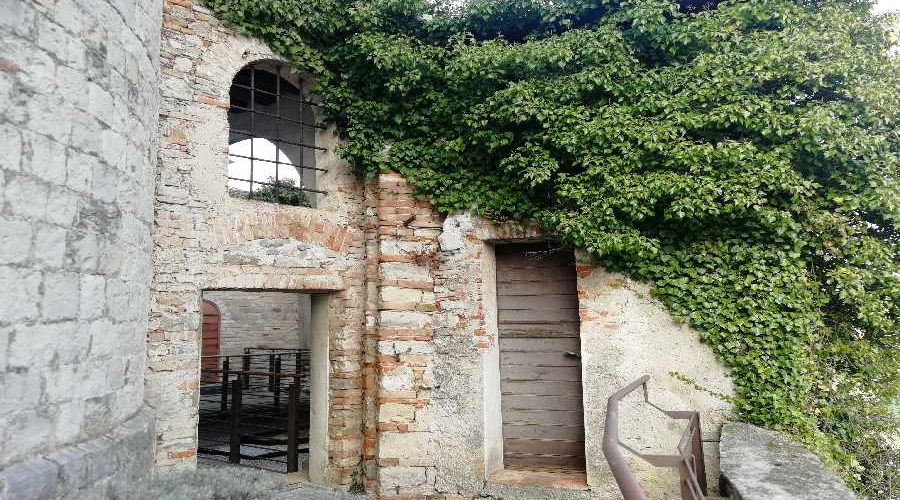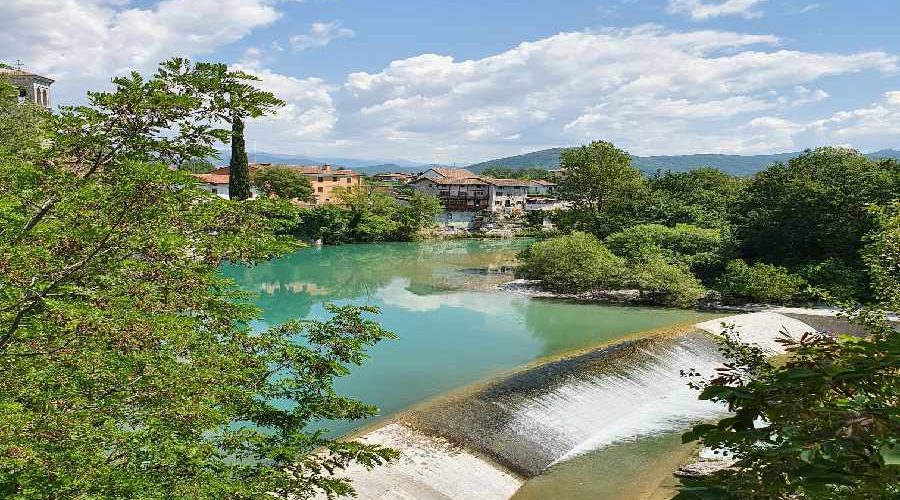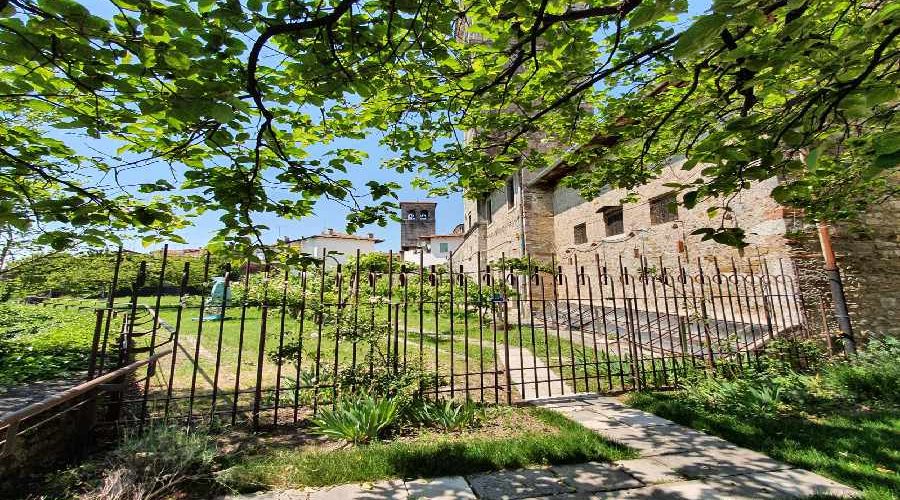When Cristina and I started to introduce you to Cividale through our own experiences, we didn’t expect that our childhood memories would come back alive in our memory. The Ursulines Monastery is the place of one of these memories. My mother used to take me there every week for catechism. It was the 80s, and you could still see the nuns walking in the large porch surrounding the garden, where round arches interspersed with slender circular columns that support small cross vaults. The atmosphere was calm and peaceful and the rich vegetation of the garden, and of the small vegetable garden on the Natisone, colored that sense of contemplation that was perceived, with shades of green in spring, yellow and red in autumn.
The Monastery of Santa Maria in Valle, which encloses the Church of San Giovanni and the Lombard Temple, is one of the most important urban centers of what was the Longobard Cividale. The monastic complex constitutes an important testimony of the history and urban evolution of the city, in particular as regards the area called "Valle", a hollow that from the Cathedral and the ancient Patriarchal Palace (now home to the Archaeological Museum) goes down to the steep banks of the Natisone. The "Gastaldaga Longobarda", seat of the royal court in the city, was located in the "Valle" area in the early Middle Ages. A destination that blends well with the monumental evolution of the area, where the church of San Giovanni and the Lombard Temple were erected and preserved.
The monastery was part of the King’s possesions the possessions, but in the beginning it occupied only a part of the Gastaldaga (palace where the aristocrats libed). Only later, between the end of the 9th century and the beginning of the 10th, the Monastery was expanded, also due to the transfer of the nuns from the monastery in Salt. The monastery of Salt was founded by three Lombard nobles and their mother, Piltrude who was the Abbess. Legend has it that it was Piltrude who founded the Monastery of Cividale, but the truth is that it was the nuns who brought with them from Salt the remains of their beloved Abbess together with their possessions. The legend is also supported by the fact that in the presbytery of the Tempietto, on the northern wall, there are two sculptural fragments dating back to the VIII-IX century, the two slabs decorated with naturalistic and abstract motifs, represent the front and the lid of the "Tomb of Piltrude ".
In medieval times the importance of the monastery in the panorama of ecclesiastical institutions was such that it became more and more the object of privileges and donations which contributed to increasing its power and prestige. All this favored the monumental growth of the Monastery which had extensive development between the sixteenth and eighteenth centuries, bringing the complex to its current configuration, with the religious buildings and monastic spaces centered around the great Cloister.
After a major restoration in 1812, the Monastery was used as the seat of a public school for the young Cividalese, under the guidance of the Benedictine nuns.
From 1943 to give support to the Benedictines, a community of Ursulines was established there, and they remained in the Monastery until a few years ago, when the whole complex became property of the Municipality of Cividale. During the period in which the Ursulines lived, much of the building was not accessible, except for the nuns, as it was a cloistered area. The spaces reserved for the Nuns were small cells articulated around wide corridors, along the eastern and southern arm of the cloister, on the upper floors of the complex. Central role is the Church of San Giovanni, which is the fulcrum of a complex system of routes linked to the daily life of the Nuns.







